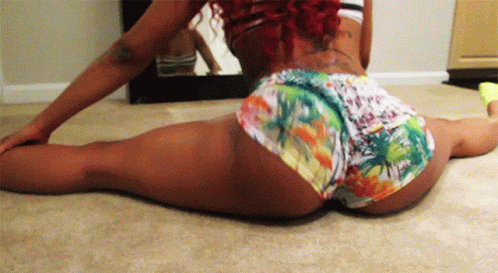Twerking is a dance move that has gained popularity in recent years, but its roots can be traced back to West African dance traditions. The word “twerk” is believed to have originated from the West African word “twerk,” which means to shake or jiggle. This dance move was brought to the United States by African slaves and has evolved over time to become the twerking we know today.
In the 1990s, twerking became popular in the New Orleans bounce music scene, where it was often performed by women in a sexually suggestive manner. It wasn’t until the early 2000s that twerking gained mainstream attention, thanks in part to hip-hop and rap music videos that featured dancers twerking. Since then, twerking has become a staple in popular culture, with celebrities and influencers often showcasing their twerking skills on social media. Despite its controversial nature, twerking has become a global phenomenon, with people of all ages and backgrounds embracing the dance move.
The Health Benefits of Twerking
Twerking is not only a fun and energetic dance move, but it also offers several health benefits. Twerking involves rapid and repetitive movements of the hips and buttocks, which can help to strengthen and tone the muscles in these areas. This can lead to improved flexibility and range of motion, as well as a more defined and sculpted lower body. Additionally, twerking is a high-energy cardiovascular workout that can help to improve stamina and endurance.
Furthermore, twerking can also be a great way to release stress and tension. The rhythmic movements of twerking can help to release endorphins, which are natural mood-boosting chemicals in the brain. This can lead to an improved sense of well-being and overall mental health. Twerking can also be a form of self-expression and empowerment, allowing individuals to embrace their bodies and feel confident in their own skin.
How to Perfect Your Twerking Technique
Perfecting your twerking technique takes practice and patience. To start, stand with your feet shoulder-width apart and bend your knees slightly. Place your hands on your hips or thighs to help guide your movements. Begin by shifting your weight from side to side, allowing your hips to move in a circular motion. As you become more comfortable, try adding in quick, pulsating movements to really make your twerk pop.
It’s important to engage your core muscles while twerking to help support your lower back and prevent injury. Keep your chest lifted and your shoulders relaxed as you focus on isolating the movement in your hips and buttocks. Remember to breathe deeply and rhythmically as you twerk, allowing your body to flow with the music. With time and practice, you’ll be able to perfect your twerking technique and feel confident in your ability to showcase this popular dance move.
Twerking in Popular Culture
Twerking has become a staple in popular culture, with countless celebrities and influencers showcasing their twerking skills on social media and in music videos. From Miley Cyrus’ controversial performance at the 2013 MTV Video Music Awards to the countless twerking challenges that have gone viral on TikTok, twerking has become a global phenomenon that transcends age, gender, and cultural boundaries.
In recent years, twerking has also made its way into mainstream fashion and entertainment, with twerk-inspired workout classes, clothing lines, and even twerking competitions becoming increasingly popular. Twerking has also been featured in movies, television shows, and music videos, further solidifying its place in popular culture. Despite its controversial nature, twerking continues to be embraced by people around the world as a fun and empowering form of self-expression.
Twerking and Body Positivity
Twerking has become a symbol of body positivity and self-empowerment for many individuals. The dance move celebrates curves, confidence, and self-expression, encouraging people of all shapes and sizes to embrace their bodies and feel confident in their own skin. Twerking allows individuals to showcase their unique beauty and express themselves through movement, regardless of societal standards or expectations.
Furthermore, twerking can be a form of reclaiming one’s body and sexuality. By embracing the sensual and rhythmic movements of twerking, individuals can feel empowered and in control of their own bodies. Twerking encourages individuals to celebrate their physicality and feel confident in their own skin, promoting a message of self-love and acceptance.

Twerking and Cultural Appropriation
Twerking has been a topic of controversy when it comes to cultural appropriation. The dance move has its roots in West African dance traditions, but it has been widely popularized by mainstream media and entertainment without proper acknowledgment of its origins. This has led to debates about who has the right to perform and profit from twerking, as well as discussions about the erasure of its cultural significance.
It’s important for individuals to be mindful of the history and cultural significance of twerking while also respecting its roots. This includes acknowledging the origins of the dance move and giving credit to the communities from which it originated. Additionally, it’s important for individuals to approach twerking with respect and understanding, recognizing its cultural significance while also celebrating its universal appeal.
Twerking and Feminism
Twerking has become a symbol of female empowerment and sexual liberation for many individuals. The dance move allows women to embrace their bodies and express themselves through movement, challenging traditional gender norms and expectations. Twerking celebrates femininity, sensuality, and confidence, encouraging women to feel empowered in their own skin.
Furthermore, twerking can be a form of reclaiming one’s sexuality and autonomy. By embracing the rhythmic movements of twerking, women can feel empowered and in control of their own bodies. Twerking encourages women to celebrate their physicality and feel confident in their own skin, promoting a message of self-love and acceptance.
In conclusion, twerking has become a global phenomenon that transcends age, gender, and cultural boundaries. From its West African roots to its mainstream popularity in popular culture, twerking has evolved into a symbol of body positivity, self-empowerment, and sexual liberation. While it has been the subject of controversy when it comes to cultural appropriation, twerking continues to be embraced by people around the world as a fun and empowering form of self-expression. Whether you’re perfecting your twerking technique or simply enjoying the dance move for its health benefits, twerking is here to stay as a celebration of confidence, sensuality, and self-expression.

